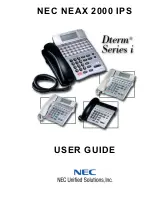
Section 4A: Safety Guidelines
195
Consumer Information on Wireless Phones
(The following information comes from a consumer information Website
jointly sponsored by the U.S. Food and Drug Administration (FDA) and the
Federal Communications Commission (FCC), entitled “Cell Phone Facts:
Consumer Information on Wireless Phones.” The information reproduced
herein is dated July 29, 2003. For further updates, please visit the Website:
http://www.fda.gov/cellphones/qa.html
.)
What is radiofrequency energy (RF)?
Radiofrequency (RF) energy is another name for radio waves. It is one form of
electromagnetic energy that makes up the electromagnetic spectrum. Some of
the other forms of energy in the electromagnetic spectrum are gamma rays, x-
rays and light. Electromagnetic energy (or electromagnetic radiation) consists
of waves of electric and magnetic energy moving together (radiating) through
space. The area where these waves are found is called an electromagnetic field.
Radio waves are created due to the movement of electrical charges in antennas.
As they are created, these waves radiate away from the antenna. All
electromagnetic waves travel at the speed of light. The major differences
between the different types of waves are the distances covered by one cycle of
the wave and the number of waves that pass a certain point during a set time
period. The wavelength is the distance covered by one cycle of a wave. The
frequency is the number of waves passing a given point in one second. For any
electromagnetic wave, the wavelength multiplied by the frequency equals the
speed of light. The frequency of an RF signal is usually expressed in units called
hertz (Hz). One Hz equals one wave per second. One kilohertz (kHz) equals
one thousand waves per second, one megahertz (MHz) equals one million
waves per second, and one gigahertz (GHz) equals one billion waves per
second.
RF energy includes waves with frequencies ranging from about 3000 waves per
second (3 kHz) to 300 billion waves per second (300 GHz). Microwaves are a
subset of radio waves that have frequencies ranging from around 300 million
waves per second (300 MHz) to three billion waves per second (3 GHz).
How is radiofrequency energy used?
Probably the most important use of RF energy is for telecommunications. Radio
and TV broadcasting, wireless phones, pagers, cordless phones, police and fire
department radios, point-to-point links and satellite communications all rely on
RF energy.
Other uses of RF energy include microwave ovens, radar, industrial heaters and
sealers, and medical treatments. RF energy, especially at microwave
frequencies, can heat water. Since most food has a high water content,
microwaves can cook food quickly. Radar relies on RF energy to track cars and
airplanes as well as for military applications. Industrial heaters and sealers use
RF energy to mold plastic materials, glue wood products, seal leather items
such as shoes and pocketbooks, and process food. Medical uses of RF energy
include pacemaker monitoring and programming.
Содержание SPH-A790
Страница 1: ...XL30 10_LMa790_091305_F2 Sprint PCS International Phone IP A790 by Samsung User s Guide ...
Страница 10: ...Getting Started Section 1 ...
Страница 17: ...Your Sprint PCS Phone Section 2 ...
Страница 19: ...Section 2A Your Sprint PCS Phone The Basics 10 Front View of Your Phone ...
Страница 91: ...Section 2E Navigating Through Menus 82 2 Outside Access Yes No 3 Default Group Yes No ...
Страница 147: ...Sprint PCS Service Features Section 3 ...
Страница 196: ...Safety Guidelines and Warranty Information Section 4 ...
Страница 241: ...Index 232 Volume Settings 39 W Web 168 171 Bookmarks 170 Launching 154 Navigating 156 Welcome i ...
















































